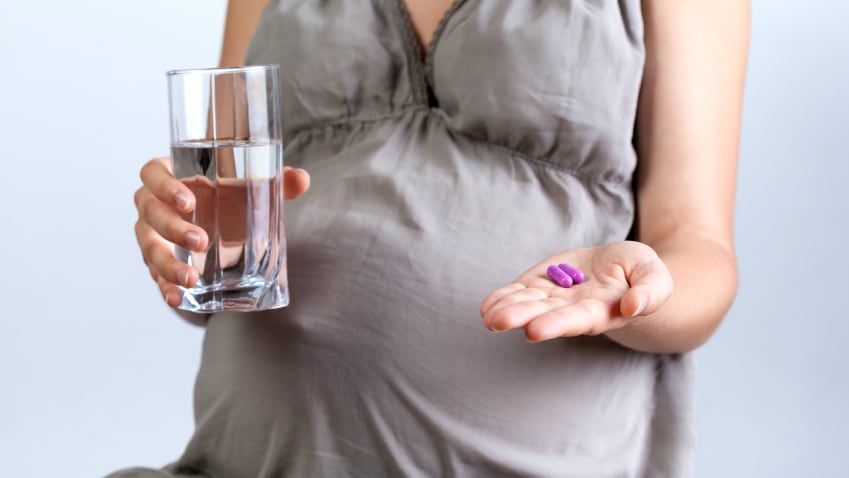While insufficient nutrient intake during pregnancy is no doubt linked to poor pregnancy and infant outcomes, the situation is exacerbated by limited evidence where resources are scant, such as in Vietnam.
Falling short
A study led by the National Institute of Hygiene and Epidemiology assessed food, macronutrient and micronutrient consumption among 1,944 pregnant Vietnamese women, collecting dietary information through an interviewer-administered food frequency questionnaire.
Their nutrient intake was assessed using Vietnamese recommended nutrient intakes (RNI) for pregnancy as a point of reference, with rice, fruits and vegetables being the main food sources.
Subsequently, the researchers reported that the subjects' mean daily energy intake was 2,004kcal: 52.2% from carbohydrates, 31.8% from fats, and 15.9% from proteins.
This met the requirements for pregnant women engaging in light physical activity, but not moderate physical activity.
In addition, just over 50% of the women failed to meet the RNI for total energy intake, and their consumption of essential micronutrients such as calcium, folate, iron and zinc all fell below the RNI, with almost all of them not meeting the recommendations for these micronutrients.
While there was no information available on prenatal macronutrient intakes in Vietnam, the researchers noted that "further improvements in dietary diversity are needed to improve and balance the intakes of macronutrients".
The micronutrient deficiencies among pregnant Vietnamese women were attributed to their low consumption of micronutrient-rich foods, such as eggs, fish, soy, and dairy products.
The study participants also tended to consume foods that typically lack bioavailable iron and zinc, putting foetal metabolism, organ growth, development and function at a disadvantage, and increasing the risk of chronic diseases developing later in life.
Interestingly, while the mean intake of micronutrients such as vitamins A, C and K, thiamine and riboflavin actually met the RNI, between 27.7% and 54.7% of the participants still failed to meet the RNI.
Socio-economic factors
The socio-economic angle was also considered, since its link with dietary intake has been reported in previous research.
Women of higher socio-economic status (be it in terms of education, occupation or income) tend to consume more macronutrients and have higher energy intake, as well as adequate levels of most micronutrients — including vitamins A, B12, D and E, calcium, folate, iron and zinc.
The researchers added: "Our study also indicates that pregnant women with a higher educational level had significantly higher intakes of proteins, vitamins C and E, thiamin, niacin, pantothenic acid, pyridoxine, iron, zinc, selenium, magnesium, potassium, and phosphorus.
"It is conceivable that higher-educated women are more health-conscious during pregnancy and thus, they may attempt to maintain a high-quality diet. Similarly, pregnant women aged <25 years had significantly higher levels of energy, macronutrients, B vitamins, iron, zinc, and selenium than older women."
Weighing the pros and cons
They also noted that the participants with a higher pre-pregnancy BMI in our study had markedly lower intakes of energy, macronutrients, and most micronutrients than their those with comparably lower BMI.
This might have been due to the advice given to overweight women to prevent excessive gestational weight gain using diet control, or to their lower physical activity levels, which necessitates less energy to achieve homeostasis.
It was likely that overweight women tended to receive advice on the prevention of excessive gestational weight gain through diet control. Alternatively, a lower energy intake in women with pre-pregnancy overweight may be attributed to their lower physical activity levels compared to women without pre-pregnancy overweight and thus the need of less energy to achieve homeostasis.
The researchers said, "The difference in the average nutrient intakes across key demographic factors and maternal pre-pregnancy weight status is integral to planning interventions targeted at specific groups."
They added that the link between maternal age, education and pre-pregnancy BMI and nutrient consumption varied across nutrient sub-groups, and that targeted programmes were necessary to improve nutrient intake in expectant Vietnamese mothers.
They concluded: "The present study indicates low dietary nutrient intakes among pregnant women in Vietnam. The prevalence of mothers failing to meet the national recommendations for essential micronutrient intakes was on average over 50%.
"Our report provides timely and important data to inform policy makers, researchers, and community stakeholders, so that appropriate nutrition interventions can be implemented to improve the diet quality and the overall health of Vietnamese women during pregnancy."
Source: Nutrients
https://doi.org/10.3390/nu10081025
"Low Dietary Intakes of Essential Nutrients during Pregnancy in Vietnam"
Authors: Cong Luat Nguyen, et al.


